FESTIVALPROGRAMM BLOG
AUSZÜGE IN DEUTSCHSIMPLICITY - the art of complexity - ARS ELECTRONICA 2006 - Festival für Kunst, Technologie und Gesellschaft - Linz, Do 31. August – Di 5. September
4
Jun
Prix Ars Electronica | posted by CorneliaSulzbacher | at 09:15:00
Sabine Hirtes – Computer Animation / Visual Effects Juror
Sabine Hirtes studied visual communication at Aachen Technical College und completed a course of training in computer graphics as well as an introduction to the Macintosh and PC systems and Alias 3D software at Munich’s Media Digital Institute. She went on to teach creative computer animation at the POLYGON Institute in Ludwigsburg, and worked as art director and operator using FGS 4500, TDI Explore (on a Silicon Graphics workstation) and Mac running Freehand, Photoshop, Pagemaker, MacroMind Director and Lumena software.
In April 1993, Hirtes was named assistant for digital image design at the Film Academy of Baden-Württemberg under Prof. Thomas Haegele, supervised student projects and gave instruction on 2D and 3D software (Softimage, Explore, AliasIWavefront, Matador Cineon, Flint, Harry, Paintbox, Avid Media Suite Pro). On the side, she was active as a freelance 2D and 3D computer graphics designer. In 1992 and 1994, she participated in workshops on MacroMind Director 3D organized by the Goethe Institute in the Ivory Coast.
In 1996, Hirtes worked together with Film Academy students to organize Jill Scott’s "Digital Body / Automata" installation for the Media Museum in Karlsruhe.
The following year, she transferred to the Department of Graphic Media at the ZKM – Center for Art and Media Karlsruhe, where she was responsible for video studies and the computer animation program. At the same time, she was working together with a number of different artists (using Softimage, Maya, Media 100, Inferno, analog video editing) and co-produced (with Thomas Zeitlberger) Kirsten Geisler’s installation “Dream of Beauty 2.0.” The following year, Hirtes once again took part in a Goethe Institute workshop, this time at the Cairo Film Institute on the subject of Softimage. In Cairo, she then worked for the video department of Al Ahram, produced TV clips (MIT Maya 2.0) and taught at the Cairo Film Institute.
In 2000, Hirtes returned to Germany and took a temporary teaching position at the Bauhaus University in Weimar (post-production and special effects). In July 2000, she was made art director at Charamel in Cologne, where she was responsible for character development and the implementation of real-time and Internet applications (Max, Filmbox, the company’s proprietary software) as well as for video projects (DPS, Combustion).
Finally, in 2002, Hirtes transferred to the Film Academy of Baden-Württemberg’s Department of Animation, Visual Effects and Digital Post-production as animation software specialist. She teaches introductory courses in 3D and 2D software (3ds Max, Maya, Combustion, Fusion, Shake, Flame, Avid DS, Adobe Video Collection), advises students on the implementation of their projects and works on extramural collaborative efforts.
3
Jun
Prix Ars Electronica | posted by CorneliaSulzbacher | at 17:00:00
Christopher Lindinger - Jury Member "u19 - freestyle computing"
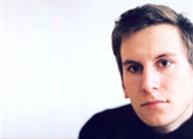 © Ars Electronica Center
© Ars Electronica Center
Christopher Lindinger studied computer science at the University of Linz and cultural management in Salzburg. He has worked as a researcher in the field of scientific visualization and as a freelance developer in the entertainment industry. Lindinger has worked for Ars Electronica since 1997, and is currently head of the Ars Electronica Futurelab’s Department of Research and Innovation. He also teaches at universities in Austria, Germany and Great Britain.
3
Jun
Prix Ars Electronica | posted by CorneliaSulzbacher | at 13:30:00
Naut Humon - Jury Member "Digital Musics"
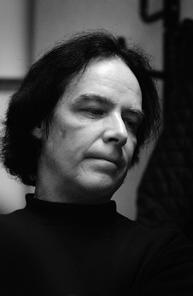 © Naut Humon
© Naut Humon
He is the director of operations for the RECOMBINANT MEDIA LABS in San Francisco. This network of A/V based actions houses the Surround Traffic Control Cinesonic system for performance exhibitions and international residencies. He is also producer and curator for the Asphodel label along with his own projects for speaker-screen installations.
3
Jun
Prix Ars Electronica | posted by CorneliaSulzbacher | at 13:30:00
Shuzo John Shiota - Jury Member "Computer Animation / Visual Effects"
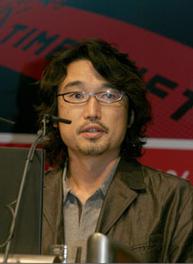 © Shuzo Shiota
© Shuzo Shiota
President/CEO, Executive Producer Shuzo, born in Hyogo prefecture Japan, moved to California when he was 6 years old where he spent the next 9 years of his life. He finished his education in Japan, majoring in International Law at Sophia University. He began his career working for Nippon Steel Corporation, the largest steel firm in Japan, where he specialized in business and market planning in the newly found Information Technology Division.
After leaving Nippon Steel, he worked as an independent business consultant, where he met Toshifumi Kawahara, founder of Polygon Pictures. Upon Toshi’s behest, Shuzo took initiative in starting up Dream Pictures Studio (DPS), a joint venture between Namco, Sony Computer Entertainment, and Polygon Pictures. After the closure of DPS, Shuzo joined Polygon Pictures (Polygon) in 1999, and spear headed the company’s transition from a boutique studio to a full-capacity animation services studio. Polygon now houses 60 artists, and is renowned worldwide for its animation prowess as well as for its efficient production pipeline. Polygon also boasts its ability in creating original characters and content. Its star creation Rocky & Hopper has amassed over 140 million USD in merchandise sales to date.
Shuzo’s produce credit include award winning short subjects “Crocotires: traction AAA”, “Polygon Family Episode 2”, the TV series “Mr.Digital Tokoro”, which was nominated for the Annies in 2001. Shuzo was appointed president and CEO of Polygon in June 2003. He is also a jury member for Prix Ars Electronica 2003 & 2004, as well as SIGGRAPH 2004.
2
Jun
Prix Ars Electronica | posted by MariaHieslmayr | at 18:50:00
Masaki Fujihata (US/JP) - Jury Member "Interactive Art"
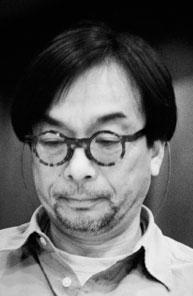 © Norbert Artner
© Norbert Artner
Masaki Fujihata (J) was born in 1956. He is a board member of the Japan Animation Film Association. Since 1987 Fujihata has been a member of ASIFA, since 1990 Associate Professor, Faculty of Environmental Information at Keio University. Since 1998 Professor at Keio University, Faculty of Environmental Information; since 1999 Professor at National University of Fine Art and Music, Inter Media Art course. Masaki Fujihata was awarded among others a Golden Nica by the Prix Ars Electronica jury for his entry *Global Interior Project* in the category Interactive Art (1996).
2
Jun
Prix Ars Electronica | posted by MariaHieslmayr | at 10:47:00
Gustav Pomberger (AT) - Jury Member "the next idea"
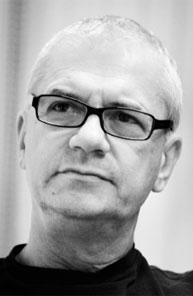 © Sabine Starmayr
© Sabine Starmayr
Gustav Pomberger is a professor for computer science at the Johannes Kepler University in Linz and is head of the Insitute for Business Informatics and of the Software Engineering Group. He has taught at the University of Zurich, the ETH Zurich, the University of Regensburg and the Technical University in Vienna.
1
Jun
Prix Ars Electronica | posted by MariaHieslmayr | at 17:00:00
Joachim Sauter - Jury Member "Interactive Art"
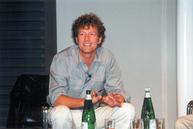 © Sabine Starmayr
© Sabine Starmayr
After completing his MA at the academy of fine arts in Berlin he studied at the 'German Academy for Film and Television', Berlin.
Joachim Sauter has been using computers both as a tool and as a medium from the early stages of his work. Fueled by this interest, he founded ART+COM in 1988 together with other artist, designers, scientists and technicians. Their goal was to practically research this new upcoming medium in the realm of art and design.
In the course of his work he was invited to participate on many exhibitions. Beside others he showed his work at 'Ars Electronica' Linz, 'Centre Pompidou' Paris, 'Stejdilik Museum' Amsterdam, 'Museum for Contemporary Art' Sidney, 'Deichtorhallen Hamburg' , 'Venice Biennial', 'ICC' Tokyo, 'Getty Center' Los Angeles, 'ZKM' Karlsruhe.
He received several awards like the 'Ars Electronica Interactive Award', the 'Los Angeles Interactive Media Award', the 'Prix Pixel INA', the 'British Academy for Film and Television Interactive Award', the 'German Design Award' and the 'Swiss Design Award'.
Since 1991 he is full professor for "New Media Art and Design" at the 'University of the Arts' Berlin and since 2001 adjunct professor at the 'MediaArt and Design Center' at UCLA, Los Angeles.
31
May
Prix Ars Electronica | posted by CorneliaSulzbacher | at 09:15:00
Rick Sayre - Jury Member "Computeranimation / Visual Effects"
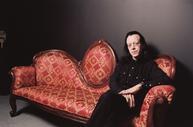 © Rick Sayre
© Rick Sayre
Rick Sayre joined Pixar Animation Studios in 1987. He developed warping, painting, image processing and shading tools, and served as Technical Director and production software developer as the studio began commercial production. His feature credits include Toy Story, Toy Story 2, A Bug's Life (for which he was nominated for a BAFTA for Visual Effects), Monsters, Inc. and The Incredibles. Rick has also been involved extensively in theatre and interactive art, including a collaboration with Chico MacMurtrie for the Prix Ars Electronica in 1991, and drew from this experience to develop an innovative animation input device, for which he received a Sci-Tech Academy Award. He welds to relax.
30
May
Prix Ars Electronica | posted by MariaHieslmayr | at 17:40:00
Pamela Winfrey (US) - Jury Member "Interactive Art"
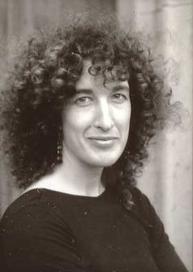 © Pamela Winfrey
© Pamela Winfrey
Pamela Winfrey, Senior Artist, Center for Public Exhibition, joined the Exploratorium in 1979 and began working in arts programming in 1986. Recent exhibitions organized by Winfrey include Reconsidered Materials (2006); Art Life (2004), an exploration of artworks with human and living attributes; Animal Magnetism (2003); and The Prepared Exploratorium (2001), in which musicians and sound artists turned the Exploratorium into a giant instrument; To help the Bealle Center in Irvine, California celebrate their fifth anniversary, she recently curated “Five” which featured five interactive media artists from five different countries.
Recent performance series organized by Winfrey include Situation Abnormal (2004-2005), featuring artists who are re-imagining the content, form, and raw material of performance; and Listen: A Sonic Series (2004-2005), with composers, musicians, artists, and scientists exploring the art of sound.
Ms. Winfrey is also a playwright and performer. Her play, "The Sounding", a drama based on the laying of the Atlantic cable was featured in Science on Stage 2004 at the Magic Theater. Plays and performance works by Winfrey have also been presented at New Dramatists in New York, Lillith Women's Theater, Mill Valley Center for the Performing Arts, Co Lab, People's Theater, Padua Hills Playwright's Festival, Lorraine Hansberry Theatre, Cedar Rapids Children's Theater, The Lab, Bay Area Playwright's Festival, and many other presenters. She is currently working on “Celestial Bodies”, a play about radio astronomers and how they know what they know, scheduled to be read in April at the Magic Theatre.
In addition, she is a founding member of Mobius Operandi, an electro-acoustic sound sculpture ensemble since 1991. (www.mobiusmusic.com) The ensemble has produced two CD’s and five large-scale performances that included a cornfield, large swinging speakers, and clocks with human clockworks.
30
May
Prix Ars Electronica | posted by MariaHieslmayr | at 12:15:00
Marko Ahtisaari (FI) - Jury Member "Net Vision"
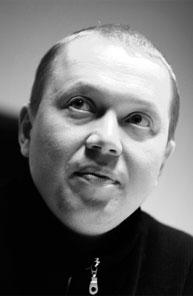 © Marko Ahtisaari
© Marko Ahtisaari
Marko Ahtisaari (FI)
Marko Ahtisaari was recently appointed to be Director of Design Strategy for Nokia. He studied economics, philosophy and musical composition at Columbia University, New York City, where he subsequently lectured in logic, philosophy of economics, and the history of thought. Prior to working at Nokia, he developed mobile applications for major clients at the design consultancy Satama interactive. Marko Ahtisaari continues to make music, and was awarded a Grammy Showcase Award for new artists.
30
May
Prix Ars Electronica | posted by CorneliaSulzbacher | at 10:00:00
Sirikit Amann - Jury Member "u19 - freestyle computing"
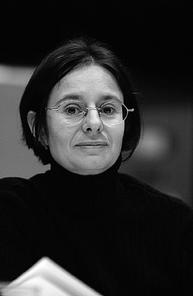 © Norbert Artner
© Norbert Artner
Sirikit Amann was born in 1961 in Hohenems, Austria, and studied political science, theater and economics in Vienna, Munich and Boston. Her 1987 doctoral thesis (Vienna) was entitled “Austro-fascist Cultural Policies,” and she has spoken widely on this subject.
Since the mid-‘80s, Sirikit Amann has been conceptualizing and organizing new media productions. In 1987 at the ÖKS (Austrian Cultural Service, since 2004 a part of KulturKontakt Austria), she began to concentrate her efforts on the creative application of new media and ICT. Since the birth of her daughter, she has been involved both in Austria and abroad in selected projects focusing on new media in art and culture with special emphasis on e-learning, and she has written and spoken about many aspects of this topic.
29
May
Prix Ars Electronica | posted by CorneliaSulzbacher | at 17:00:00
Turning Candy into a Prix Ars Electronica Award of Distinction
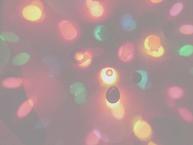 ©
© 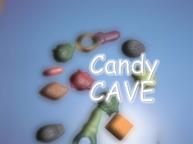 ©
©
Julius Paul Lugmayr likes candy, light, color and creative software, and he’s managed to work all of them into his remarkable light sculpture.
By experimenting with different gadgets, the 11-year-old boy from Linz got the idea of using his computer, a video camera, two small 12-volt beamers and the results of some tinkering in the workshop to design a software-controlled light sculpture that resembles a glowing, constantly changing planet of candy.
To achieve this, the beamers are used to project a specially-prepared film onto a glass globe (with a hole in it so it can also be viewed from inside). When you stick your head into the globe, you experience being at the center of a candy wonderland!
Wunderwelt Candy CAVE
Julius Lugmayr
For details about the Prix winners, click here
29
May
Prix Ars Electronica | posted by CorneliaSulzbacher | at 15:00:00
Politics from a 10-Year-Old’s Point of View
It’s never too early to cultivate an interest in politics, as 1C students from Vienna’s Stubenbastei High School have made abundantly clear.
In their 7-minute-long animated film entitled "Trick und Politik," the youngsters take positions on current issues as well as on individual politicians. A wide variety of movie tricks and special effects are interwoven into a harmonious cinematic whole. The use of a collage technique is meant to evoke associations with daily newspapers and media reportage in general. The jury rewarded this effort with an Award of Distinction.
Trick und Politik
1C BRG Stubenbastei
For details about the Prix winners, click here
29
May
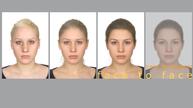 © Irene Kriechbaum
© Irene Kriechbaum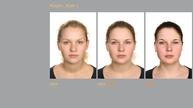 © Irene Kriechbaum
© Irene Kriechbaum
Faces come in infinite varieties and each one unique. Not even identical twins are identical!
Timelkam resident Irene Kriechbaum’s “Faceology” project sought to come up with the “average face” of her female classmates. She began with a series of head shots and then morphed together individual facial features of particular girls. The end result was the class’ “average face.”
Kriechbaum then proceeded to process the individual photos into a video. The result of displaying a rapid-fire sequence of the individual faces is that they end up blending and merging. Rhythm and speed thus open up a completely new way of looking at faces.
Faceology
Irene Kriechbaum
For details about the Prix winners, click here
28
May
Four students at Kirchdorf High School harnessed their knowledge and technical skills on behalf of environmental protection. Now, Prix Ars Electronica is recognizing this effort with an Award of Distinction.
The students constructed a robot fish that can carry out several different underwater research tasks: collect water samples, take readings of the water’s temperature, clarity and depth, and also do underwater photography. The students have been upgrading their project on an ongoing basis: reworking the design, doing some reprogramming and carrying out tests under actual conditions in the Klaus Reservoir.
Robofisch
Ralph Aichhorn, Katharina Greul, Felix Gruber, Fabian Guschelbauer / Robogreiner
For details about the Prix winners, click here
28
May
Prix Ars Electronica | posted by MariaHieslmayr | at 14:00:00
Award of Distinction in the Net Vision Category
Wayne Clements’ Web project takes a critical look at Wikipedia and—just like his subject—puts the results online for all to see...
The other side of Wikipedia
The un_wiki website displays entries submitted to Wikipedia that were subsequently rejected by the free encyclopedia’s editorial board. The source of this material is Wikipedia’s own deletion log. The program regularly monitors the deletion log and displays entries that the Wikipedia editors deleted and officially removed from the Internet.
Wikipedia versus participation
With this project, the British software artist confronts in a highly polemical fashion the discrepancy between the purported democracy and openness of Wikipedia and the way it really works. According to Wayne Clements, Wikipedia, which describes itself as The Free Encyclopedia, violates its own principles: officially, any user can post and edit entries; in reality, changes are controlled by system administrators who revise or delete entries.
Your can check out this expunged material at www.in-vacua.com/un_wiki.html
un_wiki
Wayne Clements (UK)
27
May
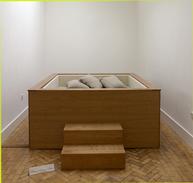 © Matthews, Works
© Matthews, Works
“Sonic Bed_London” by Kaffee Matthews consists of a bed equipped with built-in loudspeakers; when installation visitors lie down on it, an endless loop of sounds washes over them. Due to their frequency and intensity, these sounds are perceived not only with the ears but also with the entire body in what is an extraordinarily pleasant experience.
“Sonic Bed_London” has already been exhibited several times and has proven to be a popular attraction with young and old alike. The choice of what is actually a rather intimate object of use in everyday life opens up a strong social component. The installation also lets visitors experience sound in a new way and thereby provides access to a new auditory dimension.
For the Prix Ars Electronica jury, this idea was worthy of an Award of Distinction in the Digital Musics category.
Sonic Bed_London
Kaffee Matthews, Annette Works (UK)
For details about the Prix winners, click here
27
May
Prix Ars Electronica | posted by MariaHieslmayr | at 09:30:00
Individual expression in public spaces
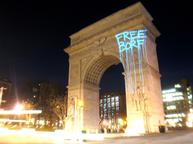 © graffiti research lab
© graffiti research lab
With their innovative “Graffiti Research Lab,” Evan Roth, James Powderly and the agents of Eyebeam OpenLab (US) made believers out of the jury and garnered an Award of Distinction in the Interactive Art category.
Billboards and neon advertising signs determine in increasingly radical fashion the appearance of our streets and squares. “Graffiti Research Lab” takes up the task of actively opposing this state of affairs. In light of the thoroughgoing commercialization of public space, its aim is to redefine and rehabilitate graffiti as an individualized means of expression.
Tag time
Even graffiti has been the beneficiary of progress lately. Now, instead of cans of spray paint, there are LEDs and magnetism—thus, reasonably-priced technologies designed to give individuals the opportunity to stake a claim to a public space and to make an impact on it. In collaboration with street artists and activists in New York and Washington D.C., “Graffiti Research Lab” has developed actions that bring software and electronics to traditional forms of expression of urban protest. This gives rise to completely new forms of Street Art in which building walls, streets and squares are painted with light-graffiti. graffitiresearch.com provides instructions on how to do it and documentation about what’s been done so far.
So, if you happen to come across a light-graffito on some wall in Linz, just think of it as a friendly communiqué from the nice folks at “Graffiti Research Lab.”
Info and instructions at http://graffitiresearchlab.com/
Graffiti Research Lab
Evan Roth, James Powderly and the agents of the G.R.L. (Eyebeam OpenLab, US)
27
May
Prix Ars Electronica | posted by CorneliaSulzbacher | at 09:15:00
Award of Distinction for Joe Colley
Finely wrought sound sculpturing and extremely loud volume characterize Colley’s “psychic stress soundtracks.” The young San Francisco artist’s work also constitutes an allusion to current political events: in the Near East, extremely loud music is being deployed as a method of torture since it provokes physical stress.
Colley himself describes his piece as follows: "Psychic Stress Soundtracks: psychic stress condensed into unstable audio. Sounds break apart quickly or continue too long, reaching lowest points, empty moments, then moments overfull of madness. Heights that cannot be maintained. Stamina, mania, obliteration. The wreckage of self."
psychic stress soundtracks
Joe Colley (US)
For details about the Prix winners, click here
26
May
Prix Ars Electronica | posted by MariaHieslmayr | at 19:10:00
Brought to life by a touch of the hand
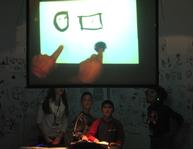 © Zachary Lieberman
© Zachary Lieberman
Zachary Lieberman from the USA is a recipient of an Award of Distinction in Interactive Art this year.
“drawn” is a poetically witty and, at the same time, enigmatic scenario in which figures drawn with pen and ink take on a life of their own. The drawn motifs are filmed by a camera, processed by special software, and displayed on a monitor. But what looks like the original drawing suddenly has you rubbing your eyes in disbelief: it starts to move in synch with the hand motions of the person who drew it. In this way, the drawer and the drawing can interact.
And suddenly, the drawing does whatever it pleases
At live performances, Zachary Lieberman’s creation elicits enthusiastic audience response; as an interactive installation at exhibitions, “drawn” exerts a magnetic attraction on all age groups. Hardly anyone can resist the magic of real figures made of solid material that the users themselves draw by hand, and which then suddenly come to life on the computer screen.
Zachary Lieberman explains that his inspiration is drawn from early cartoons (“lightning sketches”), so that “drawn” can be considered a modern form of this technique. Special software transforms a video image in real time into a digital image that, in turn, reacts to real processes like the movements of the hand that drew the figure.
Detailed information about “drawn” is available online at thesystemis.com/drawnInstallation
drawn
Zachary Lieberman (US)
Blog Autoren:
Maria Hieslmayr Cornelia Sulzbacher Wolfgang Bednarzek Gerda Hinterreiter Didi Offenhuber Beta Lounge Artists Sonja Meller StWSt denCity.net
Suche:
Kategorien:
Conferences Animation Festival Events, Concerts & Performances Campus Exhibitions e-lobby Prix Ars Electronica
Recent Posts:
Photographs of the 2006 Festival Media lab thanks! Ars Electronica Center FM4 Live from Ars Electronica in Linz
Archiv:
Posts 60 - 40 Posts 40 - 20 Posts 20 - 0


